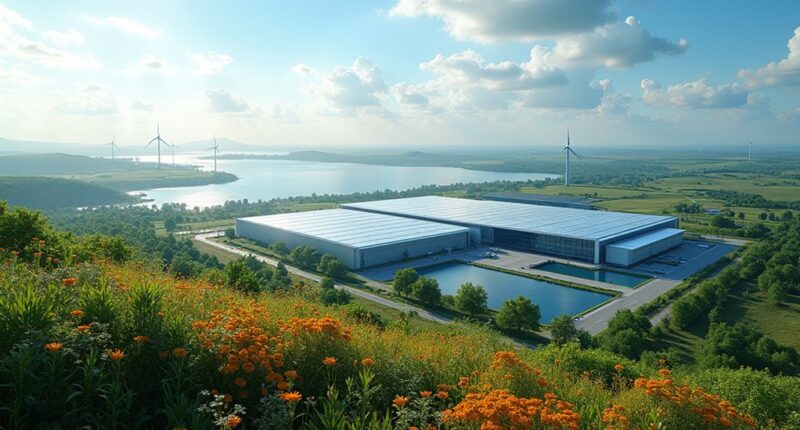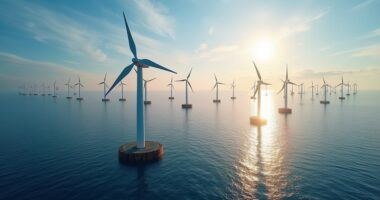Deutsche ReGas recently snagged a whopping €112 million from the EU for the Lubmin green hydrogen project, a key player in the quest for renewable energy. This initiative features a massive electrolysis plant, using renewable electricity to split water and produce hydrogen—think of it as giving water a futuristic makeover. With plans to save 1.6 million tons of CO₂, Lubmin sets the stage for local jobs and a greener future. Stick around for the full story!
EU Invests in Lubmin Green Hydrogen Initiative
In a remarkable leap towards a greener future, the European Union has sprinkled €112 million onto the Lubmin green hydrogen project, much like a chef adding the perfect amount of seasoning to a simmering stew.
This generous funding, awarded through the second European Hydrogen Bank auction, is part of a larger €992 million investment across 15 projects in five countries.
Among these, Lubmin shines brightly as one of the largest beneficiaries in Germany and the European Economic Area.
At the heart of the Lubmin initiative lies a large-scale electrolysis plant designed to split water into hydrogen and oxygen using renewable electricity.
At the core of the Lubmin project is a pioneering electrolysis plant, transforming water into hydrogen with renewable energy.
Imagine a giant machine, almost like a futuristic blender, turning water into a clean fuel source.
The first phase aims for a 200 MW electrolyzer to be operational by the end of 2026, with plans to expand to a formidable 500 MW by 2028. Phase II is expected to significantly increase production capacity and further reduce carbon emissions.
This ambitious endeavor is expected to produce up to 30,000 tons of green hydrogen annually in its first phase, escalating to 80,000 tons in the second phase.
The environmental benefits are significant, with the project projected to save around 1.6 million tons of CO₂ over its first decade.
This translates to a significant reduction in fossil fuel dependency, aiding the EU’s broader goal of avoiding more than 15 million tons of CO₂ emissions collectively from all funded projects.
The project exemplifies how carbon capture technologies can complement renewable energy systems to achieve more comprehensive decarbonization results.
Economically, Deutsche ReGas now stands as the first German company to win funding within this framework, which promises to invigorate growth and innovation in the region.
Lubmin is poised to become a key energy hub, boosting local employment and supporting Germany’s green shift strategy.
With a five-year timeline for infrastructure completion, Lubmin is not just a project; it’s a cornerstone of future energy security, blending sustainability and innovation.
As the EU continues to invest in projects like this, it moves closer to a cleaner, more resilient energy landscape.









